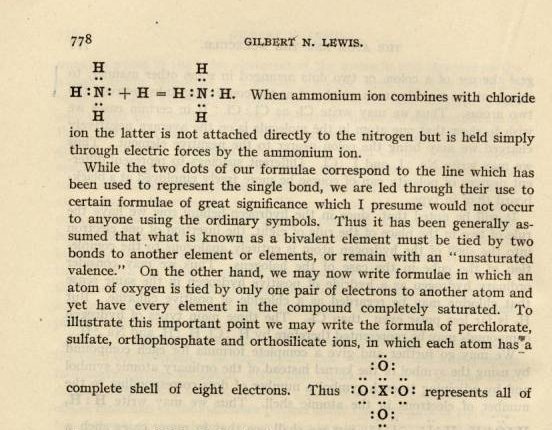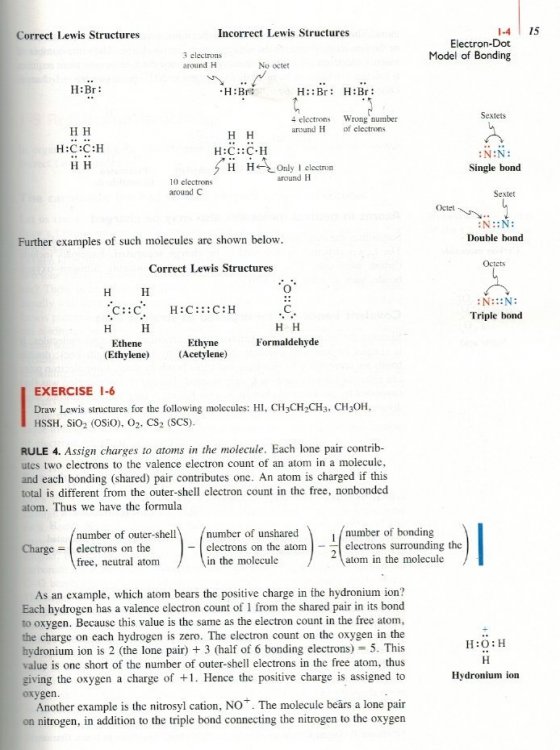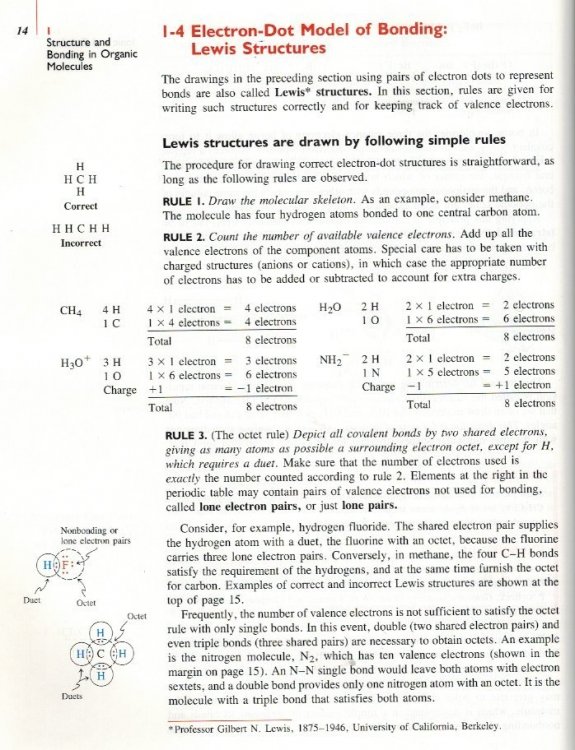-
Posts
18314 -
Joined
-
Last visited
-
Days Won
104
Content Type
Profiles
Forums
Events
Everything posted by studiot
-

Is 6 months of intense study enough time to study for an entrance exam?
studiot replied to BoredLlama's topic in Mathematics
The only other thing I can suggest, since i don't know you or your system at all well is to check around with your own home advisors. If you were to indicate which questions on those papers you could do, which you understood but could not complete the answers and which you just did not understand or know what to do we might be able to quantify the workload. -
0n the Origin of Species was published in 1859, after some 30 years in the making including round the world data gathering and study in the early 1830s. Hardly the work of a late 19 century chancer (do you really know any ? You have provided no references to your claim.) It is perhaps less well known that as well prominent male professors a number ladies carried out meticulous detailed observation recording and cataloguing of Natural World, every bit the equal of the tradition of Euclid. The names Marianne North, Mary Ward spring to mind. Of course there were cranks and charlatans then, as now. But I rather wonder if the tradition of attention to detail is waning in modern times with the growing desire for instant gratification and results. As regards the improbability of simultaneous occurrence of life in vastly different locations and environments think about it. You have the combination of two very low probability events that have to happen for this to come about. I think you really mean contemporaneously. Which one led to widespread life on Earth? Well consider the requirements. A supply of nutrients and energy. If an organism developed in hydrothermal vents and wandered away it would loose both and be a very long way from alternative sources. An organism in a rock pool would still have both if it translocated. So I favour the chances of the latter, but as you say I can't prove it. But then Science does not deal in 'proof', only consistencies with observation.
-
Yes the moments of area about x = o of the erf(x) are very important in statistics as you note +1.
-
Hi Dag ? How is your applied maths ? The error function has a much wider application than just in statistics and probability, so I will deal with that first. As you note it is defined by a definite integral, derived from the definite integral [math]\int\limits_{ - \infty }^\infty {{e^{ - {t^2}}}} dt = \sqrt \pi [/math] This integral can be linked to the binomial theorem, beta and gamma functions and some other special functions defined by integrals and the fact that it is finite is of great use. Because it is an integral of a continuous function, (that remains finite) shorter intervals than plus/minus infinity also posses this property and this is employed in defining the error function. The exponential integral also finds use in deriving inverse laplace transforms, so can be used to complete the solution of partial differential equations. For example in solving the Telegrapher's equation and the heat distribution equation. So it ops up in widely separated and suprising places. Particularly as some of the variables concerned are discrete,as with the gamma and binomial functions. Normalising the above integral (setting it to one) yields the probability connection to a random variable, x, since the probability over all x must sum to 1. As to a random variable, this is a variable which can take any of a range of values, which may be continuous or discrete such that relative frequency is interpreted as the probability. So this is how the error function is connected to both statistical and analytical functions.
-
But is it an open ball or a closed ball?
-
You need to clearly distinguish between the sign of a number and the operations of addition and subtraction. Don't forget that at least one number has no sign, but you can still add or subtract it. Also if you try the set theory approach, what happens if you subtract a (positive) number from a negative number ? The result is 'larger' than the original!
-

Electricity (split from Science Project (static charge))
studiot replied to westom's topic in Classical Physics
Ahem? Since everbody seems to want to discuss the telegrapher's equation, should we at the very least apply it correctly ? How many wires are required to connect one mesh node to another ? (answer 1) How many wires are required to apply the telegrapher's equation ? (answer twice as many ie 2) So I repeat my earlier question what does the telegrapher's equation have to do with mesh conditions? I am still waiting for a response to my last question -

Electricity (split from Science Project (static charge))
studiot replied to westom's topic in Classical Physics
Ahem? -
I am suprised no-one has mentioned fractional quantities (since division itself was mentioned). This is the standard bugbear of the view of multiplication as repeated addition and division as repeated subtraction. This issue has at least partly been addressed in mathematics by the 'shift operator' which allows one to move forwards or backwards along a table of values (integer or fractional) one entry at a time. Unfortunately I could quickly find a simple reference, Wikipedia launches straight into higher maths in this instance, but the technique has been used for years in numerical methods, quantum mechanics and many other situations.
-
If you ask me the Lewis notation has gained ground since it was a passing page or page and a half in my textbooks in the 1960s. Compare that with Rachel's text book : ref p253 - 260 so at least 7 pages. This is borne out in the space devoted to this subject in both the more recent textbooks and website I looked at. Hardly phasing the subject out. Which in my opinion is what should be happening. I think a better way forward would be to say "Here is an older notation you may well come across in reading. So will present it in outline so if you ever need to use it or read it in the future you will have heard of it. But we will not examine it as its use is being phased out." That was how I saw it in 1966 and have never used it or needed it in anger since. But today teachers have set out Lewis rules and are testing students on them. So the only view that matters to Rachel is the examiners' and she has to present her work in whatever way they require.
-
I wasn't referring to your method in particular. I must have looked through at least a couple of dozen books and websites, including UK official teaching ones for Lewis Notation and do you know what? Every one of them is different. I think that is also the point you are making in your own way.
-
So there is even less reason to teach a bastardised version. My suggestion was to use exactly what was asked and no more and then move on to better things.
-
My comment was made for two reasons. Based on the OP, Rachel is perfectly comfortable using lines to represent bonds and can tell that each bond has two electrons in it. The second reason is that it is not standard notation and when you get to later topics or even when you get further into drawing Lewis structures, using dot notation to represent bonds is confusing. Many higher institutions will mark you wrong or deduct marks for using this notation - it is a bad habit to fall in to. It is truly the bane of our first year teaching staff’s existence. They take this notation from this topic and start drawing bonds as dots when covering, for example, organic chemistry. We have systematic methods of drawing structures for a reason! The other rather irritating part is that it is taught differently and inconsistently in different schools and so there is a lot to have to stamp out. However GN Lewis did not use lines. Further the OP scan/photo of the actual question paper shows a figure that does not contain lines, but relies totally on the Lewis dot notation. The question was "Is that dot diagram correct or incorrect and if it is incorrect draw a correct diagram.?" I would suggest that since the diagram was incorrect only in the placement of the dots, and Rachel recognised this, a corrected one should include only dots. I would venture to suggest that most of the problems arising from using 'Lewis Notation' arises from later persons changing the original for their own ends, particular mixing lines and dots is IMHO bad practice. Here is an extract from the original 1916 paper. Nowhere in the 25 pages is the line used to represent a bond. It should be remembered that decade before Schrodinger, Heisenberg and London developed orbital theory 10 to 15 years later. It was even 3 years before the Pauli exclusion principle. The important point about Lewis is that here was the first suggestion of sharing electrons.
-
Whilst I agree that the question is not clear, there is indeed an answer closer to what I understand the question to mean. No I would not mention photons and but you could mention the constant speed of light since it connects frequency and wavelength, both of which you are asked about. But I also still say you need to reverse your thinking and statements. Fig 3 says you can infer that change of frequency does not affect amplitude, so you can infer that there is no direct connection between amplitude and frequency. In other words change of amplitude does not affect frequency. But you know that the energy of a wave depends upon both frequency and amplitude, but independently of each other. Page 138 refers to electromagnetic waves and shows light from a light source being split into different colours (frequencies). So if you increased the power to that lightsource you will increase the light output - by increasing the amplitude of the lightwave. Increasing the amplitude will increase the lightwave energy but will have no effect on the frequency or wavelength of the light. But increasing the power to any real lightsource (with a spectrum as shown on page 138) is likely to also change the frequency spectrum of the light. This change will increase the relative amounts of higher frequency light. This will also increase the relative amount of shorter wavelength light since the product of frequency and wavelength is the constant speed of light.
-
2 lone pairs = 4 electrons plus the 8 bonding electrons. So where do you get 6 + 8 from?
-
My maths dictionary has These quantifier terms appear in Logic in the predicate calculus
-
I think we all here suggest you do.
-
Yup, in fact the energy of a wave is proportional to the square of the amplitude. https://www.physicsclassroom.com/class/waves/Lesson-2/Energy-Transport-and-the-Amplitude-of-a-Wave You question says But it did not say how. So you have two separate factors which can increase the energy Changing the amplitude Changing the frequency Your explanation should work the energy relationships backwards to explain how the energy was increased with each and therefore what the effect was on the frequency and wavelength.
-
As hypervalentiodine says there are many problems associated with Lewis structures. Originally they were simple dot diagrams, but some authors now connect this to also show bonds as valency lines. I suggest you stick to the dots. Because of the many exceptions the dot structure is taught and then students move on. So I also suggest you do enough to earn the marks (since you must and HI doesn't need to) but remember better methods follow. Here is a presentation going only as far as you need to answer your question (which it does). This does include Hypervalent's rules as she already set out, but the slightly different explanation may help.
-
Suppose you are standing on the beach. Would you like to be hit by a large wave or a small one ? A large wave has greater amplitude than a small one.
-
What a mess of a question. Well page 138 suggests we are talking about electromagnetic waves and the comment adjacent to Fig3 mentions swansont's other variable - amplitude. In the text it also refers to the relationship between frequency and wavelength I mentioned. Does the book say anywhere what the relationship between amplitude and energy is? (there is a very important one) After this you will know this substantially more than other less diligent students on your course.
-
Well spotted. +1 The energy can change without chnage of wavelength or frequency. You don't need a laser for this. Just turning up the volume on the radio will do it. (This is a hint towards swansont's other variable) So it boils down to what change was made first ? Energy, frequency, wavelength, or what ?
-

Is 6 months of intense study enough time to study for an entrance exam?
studiot replied to BoredLlama's topic in Mathematics
Yes, the book would stand you in good stead for many years to come in many different disciplines. However you now mention computer science, is this what you intend to study? I did not see any questions on the paper you posted that would be of much interest to a computer scientist, so if you genuinely have to pass it just learn enough to do so. -
Yes it is correct, but you might like to use one of your sentences to say why these statements are true. What is the relationship between frequency and wavelength? You have mentioned electromagnetic waves, although your question simply says waves. Does this make a difference?
-

Electricity (split from Science Project (static charge))
studiot replied to westom's topic in Classical Physics
We seem to have reached an impasse. A good way forward in such circumstances is to set down what can be agreed. I consider that we agree that there are no ideal circuit elements in the real world. Personally I am quite happy to let 'electricity' stand as short form for 'electrically derived phenomenon' or somesuch and let the context show the phenomenon concerned. I would appear that you are of similar mind. Are you agreed on these and would you like to add any others ?




